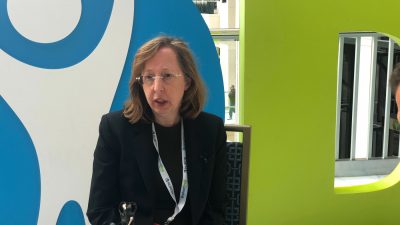Agency Unveils RaDaR to Help Patient Groups Develop Rare Disease Registries

RaDaR, the catchy new name for the U.S. government-run Rare Diseases Registry Program, aims to help patient advocacy groups with limited resources build their own disease registries.
The site was developed by the National Center for Advancing Translational Sciences (NCATS), a division of the National Institutes of Health (NIH).
Anne Pariser, MD, director of the Office of Rare Diseases Research at NCATS, spoke at the recent 2019 World Orphan Drug Congress USA, held in April in Oxon Hill, Maryland.
“A registry is a very general term meaning a broad collection of data, while a natural history study is a preplanned observational study intended to track the course of a specific disease,” Pariser said.
“For example, you could have something very simple like a list of email addresses that answer the question, ‘Who are you and how can we get in touch with you?’ Some people do that as a very first step in trying to unite a community,” she said. “It can also be a Facebook group. That’s a free resource and one way to build a community.”
Pariser added: “You could also have complicated registries like natural history studies, where you’re trying to collect detailed information about the course of the disease. It depends on your research goals. If you have a good understanding of the disease, sometimes these natural history studies can serve as a historical comparator. With some very effective therapies, the results are quite striking, and you can use the historical comparison with the data you have as a trial.”
Pariser, who is from Canada originally, studied at Georgetown University School of Medicine and spent 16 years at the U.S. Food and Drug Administration — first as a medical officer, then a team leader at the agency’s Center for Drug Evaluation and Research (CDER), reviewing rare disease applications. In 2010, Pariser established the CDER’s Rare Diseases Program.
“Our philosophy is that every rare disease should have a registry or natural history study. These registries need to be of good quality, and they need to be scalable,” she said. “We’re talking about 7,000 different rare diseases. Data is most useful if it can be shared, trusted, found and analyzed. If we keep doing this one at a time, we’re just not going to get where we want to go.”
At the moment, the project consists of 21 consortia working on 200 rare diseases, she said.
From GRDR to RaDaR
RaDaR traces its beginnings to 2010, when NCATS established the Global Rare Diseases Patient Registry Data Repository (GRDR). A proof-of-concept pilot project, GRDR aimed to develop a web-based resource to aggregate, secure and store de-identified patient information from different registries for rare diseases, all in one place.
This pilot included 12 patient advocacy group registries and ran from 2010 to 2013. But NCATS concluded that post-processing data wasn’t realistic, and that the development of common data elements (CDEs) is labor-intensive and slow. So, the agency decided to take a tiered, modular approach, and launched totally new content this past February.
Tier 1 consists of demographic data such as patients’ ages and residence. Tier 2 covers disease diagnosis and common characteristics, while Tier 3 is disease-specific and often includes unique characteristics of the rare disease in question.
“For example, if you’re trying to design a clinical trial around a rare disease, what are you going to measure?” she said. “What are things that affect patients the most? How do you measure that, and over what period of time?”
Pariser said her agency would like to see more natural history studies and registries done for each rare disease.
“RaDaR is targeted toward patient groups so that they can start building their own registries,” she said. “We’re especially trying to help people understand good data practices so they can educate themselves to plan for better registries.”
Pariser said she’s seen a “big uptick” in the number of rare diseases that now have their own registries, noting that “they’re a first step in trying to put together a research program, and patients get to know each other better.”
The longest and best-established patient registry is run by the Cystic Fibrosis Foundation, she said. That registry began in the 1960s and is considered the “gold standard” of patient registries.
“It’s now a very mature database. They’ve developed many treatments and biomarkers,” Pariser said. “Several organizations involved with Duchenne muscular dystrophy have imaging registries, and a repository of serial MRIs for muscle groups, and clinical markers. FARA [the Friedreich’s Ataxia Research Alliance] also has an excellent registry going on. These are just a few. Through our NCATS network, all of our consortia, as part of our grants, are required to do longitudinal observational studies.”







